#U.S. Civil Service Commission
Explore tagged Tumblr posts
Text
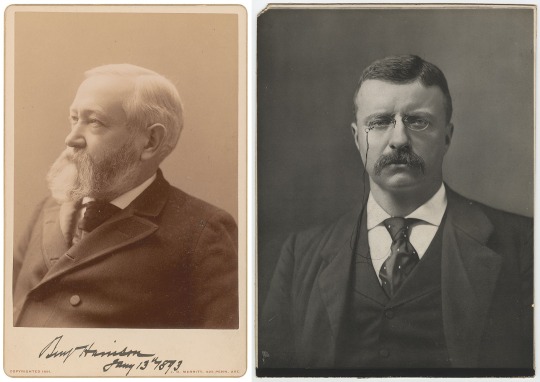
"Damn the President! He is a cold-blooded, narrow-minded, prejudiced, obstinate, timid old-psalm singing Indianapolis politician."
-- Theodore Roosevelt, after an uncomfortable meeting with President Benjamin Harrison, who had appointed him to the United States Civil Service Commission, but who Roosevelt felt was no longer supportive of the Commission's reform work when it began to investigate certain officials close to President Harrison, letter to Congressman Henry Cabot Lodge, October 4, 1890.
#History#Presidents#Presidential History#Benjamin Harrison#President Harrison#Harrison Administration#Theodore Roosevelt#President Roosevelt#TR#Quotes by Presidents#Quotes About Presidents#Presidential Quotes#U.S. Civil Service Commission#Politics#Political History#Henry Cabot Lodge#Civil Service Commission#Civil Service#Civil Service Reform#Presidential Rivals#Presidential Rivalries
90 notes
·
View notes
Text
What Joe Biden has Done for LGBTQ+ People
I wanted to list out everything The Biden Administration has done for Queer people in the last 3 and a half years, but according to GLAAD it'd been 337 moves (and I noticed they missed a few things...) there was just no way to list every ground breaking first Queer person ever nominated to fill this or that job, every ally with a historic LGBT rights record nominated for a top job, every beautiful statement of support, every time he tried to get Congress to pass the Equality Act (support it!) So I've gone through and done my best to pick the ones I think were the most important, but everyone should check out the full list!

Day 1: Signs executive orders banning discrimination and ordering a full review of all federal agencies policies to better include and support LGBT people
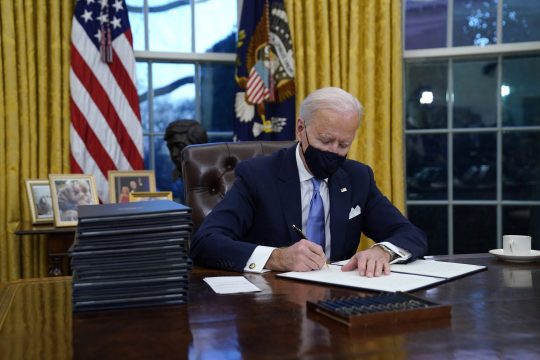
Pete Buttigieg becomes the first openly gay person nominated and confirmed for a cabinet level post as Secretary of Transportation
Revokes Trump’s 2018 ban on transgender military personnel
Department of Housing and Urban Development implements LGBTQ protections in housing, becoming first federal agency to implement Pres. Biden’s executive order
First President to recognize and proclaim Trans Day of Visibility
Department of Justice Civil Rights Division issues an official memo that the Supreme Court's Bostock decision against LGBT workplace discrimination also applies to education through Title IX
HUD withdraws a Trump Administration proposed rule change, and reaffirms trans people's rights to seek shelters matching their gender identity
HHS announces the withdrawal of Trump Administration rules that allowed discrimination by healthcare organizations against LGBT people.
The State Department and later Homeland Security announce babies born to Queer couples overseas will be American citizens if one parent is American, in the past the child only qualified if they were genetically related to the American citizen parent.
The Justice Department files against a West Virginia law banning trans students from school athletics
Department of Veterans Affairs announces it will offer gender confirming surgery for transgender veterans. There are an estimated 134,000 transgender veterans in the U.S. and another 15,000 transgender people serving in the armed forces.
President Biden Signs a law making the Pulse Night Club a national memorial
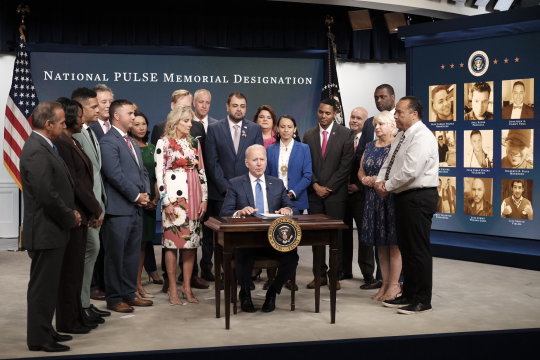
The State Department creates an X gender marker for passports and other documents, allowing gender affirming identification for non-binary and intersex people for the first time.
The Census Bureau for the first time issues a Survey with questions about sexual orientation and gender identity
On the 10th anniversary of the repeal of Don’t Ask Don’t Tell, Veterans Administration announces that soldiers discharged for homosexual conduct, gender identity or HIV status qualify for veterans' benefits
Dr. Rachel Levine becomes the first trans person confirmed by the US Senate when she was nominated to be Assistant Secretary for Health, she also became the first trans flag rank officer when she was sworn in as a 4 star Admiral for her job as head of the Public Health Service Commissioned Corps, his makes her the highest ranked trans person in government
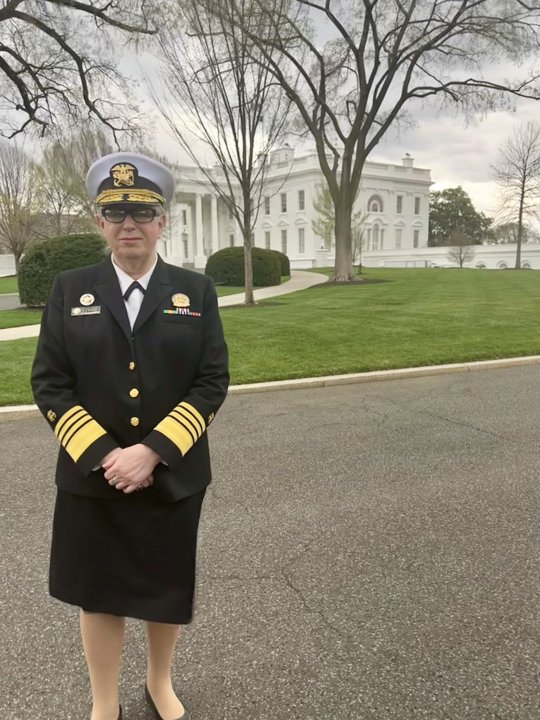
Holds the first ever vigil in the White House for Transgender Day of Remembrance
HHS announces rule change to reinstate and expand protections against discrimination in the Affordable Care Act, including denying coverage for gender-affirming care.
Social Security Administration reverses a Trump Administration policy and allows benefits claims by surviving partners in same-sex relationships, whose partner died before marriage equality was legal
President Biden signs the reauthorization of the Violence Against Women Act (a bill he helped originally craft in the Senate) which for the first time has grant programs dedicated to expanding and developing initiatives specifically for LGBTQ survivors of domestic violence
The TSA announces new technology and policy shifts to improve the customer experience of transgender travelers who have previously been required to undergo additional screening due to alarms in sensitive areas.
The Social Security Administration allows people to edit their gender and name on records for the first time without legal and medical documentation
The US Air Force announces it'll offer medical and legal aid to any personnel families affected by state level anti-trans youth bills.
Karine Jean-Pierre becomes the first Lesbian to serve as White House Press Secretary

on 50th anniversary of Title IX The Department of Ed strengthens protections for Students against sexual harassment and discrimination
Veterans Affairs announces survivor benefits now extended to partners from relationships before marriage equality was legalized in 2015
President Biden signs the Respect for Marriage Act into law enshrining protections for marriage equality for same-sex and interracial couples

The Department of Ed announces new rules around athletic eligibility under Title IX, declaring blanket bans on trans students violate the law and setting up strike standards for schools
The White House announced a suit of new protections for LGBTQ people, including a new job at the Department of Ed to combat book bans, a joint DoJ Homeland Security effort to combat violence and threats and HHS evidence-based guidance to mental health providers for care of transgender kids
President Biden signs an Executive Order directing HHS to protect LGBTQI+ youth in the foster care system, a rule they later passed requiring Queer foster children to be placed in affirming homes
The Biden administration joins families of transgender youth in Tennessee and Kentucky in petitioning the U.S. Supreme Court to review and reverse a circuit court ruling allowing a ban on mainstream health care to be enforced
President Biden Signs a EO expanding on past EO on equality and helping underserved communities
The Department of Education's Civil Rights office opens an investigation into the death of Nex Benedict. President Biden in his statement said: "Every young person deserves to have the fundamental right and freedom to be who they are, and feel safe and supported at school and in their communities. Nex Benedict, a kid who just wanted to be accepted, should still be here with us today. Nonbinary and transgender people are some of the bravest Americans I know. But nobody should have to be brave just to be themselves. In memory of Nex, we must all recommit to our work to end discrimination and address the suicide crisis impacting too many nonbinary and transgender children.”
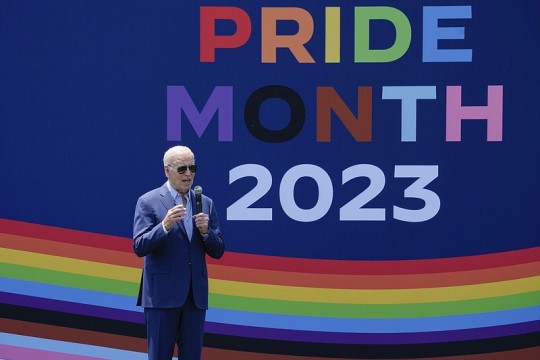
#Joe Biden#Thanks Biden#pride#pride month#politics#US politics#LGBT#LGBTQ#Queer#Trans#gay#civil rights#there's a lot more
2K notes
·
View notes
Text
Elon Musk and Vivek Ramaswamy: The DOGE Plan to Reform Government
Following the Supreme Court’s guidance, we’ll reverse a decades long executive power grab.
By Elon Musk and Vivek Ramaswamy
Wall Street Journal
November 20, 2024
Our nation was founded on the basic idea that the people we elect run the government. That isn’t how America functions today. Most legal edicts aren’t laws enacted by Congress but “rules and regulations” promulgated by unelected bureaucrats—tens of thousands of them each year. Most government enforcement decisions and discretionary expenditures aren’t made by the democratically elected president or even his political appointees but by millions of unelected, unappointed civil servants within government agencies who view themselves as immune from firing thanks to civil-service protections.
This is antidemocratic and antithetical to the Founders’ vision. It imposes massive direct and indirect costs on taxpayers. Thankfully, we have a historic opportunity to solve the problem. On Nov. 5, voters decisively elected Donald Trump with a mandate for sweeping change, and they deserve to get it.
President Trump has asked the two of us to lead a newly formed Department of Government Efficiency, or DOGE, to cut the federal government down to size. The entrenched and ever-growing bureaucracy represents an existential threat to our republic, and politicians have abetted it for too long. That’s why we’re doing things differently. We are entrepreneurs, not politicians. We will serve as outside volunteers, not federal officials or employees. Unlike government commissions or advisory committees, we won’t just write reports or cut ribbons. We’ll cut costs.
We are assisting the Trump transition team to identify and hire a lean team of small-government crusaders, including some of the sharpest technical and legal minds in America. This team will work in the new administration closely with the White House Office of Management and Budget. The two of us will advise DOGE at every step to pursue three major kinds of reform: regulatory rescissions, administrative reductions and cost savings. We will focus particularly on driving change through executive action based on existing legislation rather than by passing new laws. Our North Star for reform will be the U.S. Constitution, with a focus on two critical Supreme Court rulings issued during President Biden’s tenure.
In West Virginia v. Environmental Protection Agency (2022), the justices held that agencies can’t impose regulations dealing with major economic or policy questions unless Congress specifically authorizes them to do so. In Loper Bright v. Raimondo (2024), the court overturned the Chevron doctrine and held that federal courts should no longer defer to federal agencies’ interpretations of the law or their own rulemaking authority. Together, these cases suggest that a plethora of current federal regulations exceed the authority Congress has granted under the law.
DOGE will work with legal experts embedded in government agencies, aided by advanced technology, to apply these rulings to federal regulations enacted by such agencies. DOGE will present this list of regulations to President Trump, who can, by executive action, immediately pause the enforcement of those regulations and initiate the process for review and rescission. This would liberate individuals and businesses from illicit regulations never passed by Congress and stimulate the U.S. economy.
When the president nullifies thousands of such regulations, critics will allege executive overreach. In fact, it will be correcting the executive overreach of thousands of regulations promulgated by administrative fiat that were never authorized by Congress. The president owes lawmaking deference to Congress, not to bureaucrats deep within federal agencies. The use of executive orders to substitute for lawmaking by adding burdensome new rules is a constitutional affront, but the use of executive orders to roll back regulations that wrongly bypassed Congress is legitimate and necessary to comply with the Supreme Court’s recent mandates. And after those regulations are fully rescinded, a future president couldn’t simply flip the switch and revive them but would instead have to ask Congress to do so.
A drastic reduction in federal regulations provides sound industrial logic for mass head-count reductions across the federal bureaucracy. DOGE intends to work with embedded appointees in agencies to identify the minimum number of employees required at an agency for it to perform its constitutionally permissible and statutorily mandated functions. The number of federal employees to cut should be at least proportionate to the number of federal regulations that are nullified: Not only are fewer employees required to enforce fewer regulations, but the agency would produce fewer regulations once its scope of authority is properly limited. Employees whose positions are eliminated deserve to be treated with respect, and DOGE’s goal is to help support their transition into the private sector. The president can use existing laws to give them incentives for early retirement and to make voluntary severance payments to facilitate a graceful exit.
Conventional wisdom holds that statutory civil-service protections stop the president or even his political appointees from firing federal workers. The purpose of these protections is to protect employees from political retaliation. But the statute allows for “reductions in force” that don’t target specific employees. The statute further empowers the president to “prescribe rules governing the competitive service.” That power is broad. Previous presidents have used it to amend the civil service rules by executive order, and the Supreme Court has held—in Franklin v. Massachusetts (1992) and Collins v. Yellen (2021) that they weren’t constrained by the Administrative Procedures Act when they did so. With this authority, Mr. Trump can implement any number of “rules governing the competitive service” that would curtail administrative overgrowth, from large-scale firings to relocation of federal agencies out of the Washington area. Requiring federal employees to come to the office five days a week would result in a wave of voluntary terminations that we welcome: If federal employees don’t want to show up, American taxpayers shouldn’t pay them for the Covid-era privilege of staying home.
Finally, we are focused on delivering cost savings for taxpayers. Skeptics question how much federal spending DOGE can tame through executive action alone. They point to the 1974 Impoundment Control Act, which stops the president from ceasing expenditures authorized by Congress. Mr. Trump has previously suggested this statute is unconstitutional, and we believe the current Supreme Court would likely side with him on this question. But even without relying on that view, DOGE will help end federal overspending by taking aim at the $500 billion plus in annual federal expenditures that are unauthorized by Congress or being used in ways that Congress never intended, from $535 million a year to the Corporation for Public Broadcasting and $1.5 billion for grants to international organizations to nearly $300 million to progressive groups like Planned Parenthood.
The federal government’s procurement process is also badly broken. Many federal contracts have gone unexamined for years. Large-scale audits conducted during a temporary suspension of payments would yield significant savings. The Pentagon recently failed its seventh consecutive audit, suggesting that the agency’s leadership has little idea how its annual budget of more than $800 billion is spent. Critics claim that we can’t meaningfully close the federal deficit without taking aim at entitlement programs like Medicare and Medicaid, which require Congress to shrink. But this deflects attention from the sheer magnitude of waste, fraud and abuse that nearly all taxpayers wish to end—and that DOGE aims to address by identifying pinpoint executive actions that would result in immediate savings for taxpayers.
With a decisive electoral mandate and a 6-3 conservative majority on the Supreme Court, DOGE has a historic opportunity for structural reductions in the federal government. We are prepared for the onslaught from entrenched interests in Washington. We expect to prevail. Now is the moment for decisive action. Our top goal for DOGE is to eliminate the need for its existence by July 4, 2026—the expiration date we have set for our project. There is no better birthday gift to our nation on its 250th anniversary than to deliver a federal government that would make our Founders proud.
165 notes
·
View notes
Text

Shawn Skelly
Gender: Transgender woman
Sexuality: N/A
DOB: Born 1966
Ethnicity: White - American
Occupation: Veteran, civil servant, activist
Note: In 2017, she was appointed by Obama to the National Commission on Military, National, and Public Service, making her one of the highest-profile, openly transgender presidential appointees in U.S. history.
#Shawn Skelly#transfemme#trans femme#lgbt#lgbt rights#lgbtq#trans rights#transgender#trans woman#1966#white#veteran#civil servant#activist
55 notes
·
View notes
Text

LETTERS FROM AN AMERICAN
December 29, 2024
Heather Cox Richardson
Dec 30, 2024
Former President Jimmy Carter died today, December 29, 2024, at age 100 after a life characterized by a dedication to human rights. His wife of 77 years, Rosalynn Carter, died on November 19, 2023; she was 96 years old.
James Earl Carter Jr. was born on October 1, 1924, in Plains, in southwestern Georgia, about half an hour from the site of the infamous Andersonville Prison, where United States soldiers died of disease and hunger during the Civil War only sixty years earlier. He was the first U.S. president to be born in a hospital.
Carter’s South was impoverished. He grew up on a dirt road about three miles from Plains, in the tiny, majority-Black village of Archery, where his father owned a farm and the family grew corn, cotton, peanuts, and sugar cane. The young Carters and the children of the village’s Black sharecroppers grew up together as the Depression that crashed down in 1929 drained away what little prosperity there was in Archery.
After undergraduate coursework at Georgia Southwestern College and at the Georgia Institute of Technology, Carter completed his undergraduate degree at the U.S. Naval Academy. In the Navy he rose to the rank of lieutenant, serving on submarines—including early nuclear submarines—in both the Atlantic and Pacific fleets.
In 1946, Carter married Rosalynn Smith, a friend of his sister’s, who grew up in Plains. When his father died in 1953, Carter resigned his naval commission and took his family back to the Carters’ Georgia farm, where he and Rosalynn operated both the farm and a seed and supply company.
Arriving back in Georgia just a year before the U.S. Supreme Court’s Brown v. Board of Education decision declared racial segregation in public schools unconstitutional, Carter quickly became involved in local politics. In 1962 he challenged a fraudulent election for a Georgia state senate seat, and in the runoff, voters elected him. The Carters became supporters of Democratic president John F. Kennedy in a state whose dominant Democratic Party was in turmoil as white supremacists clashed with Georgians eager to leave their past behind. Kennedy had sent troops to desegregate the University of Mississippi.
Carter ran for governor in 1966, the year after Congress passed the Voting Rights Act. He lost the primary, coming in third behind another liberal Democrat and a staunch segregationist Democrat, Lester Maddox, who won it and went on to win the governorship. When Carter ran again in 1970, he emphasized his populism rather than Black rights, appealing to racist whites. He won the Democratic primary with 60% of the vote and, in a state that was still Democrat-dominated, easily won the governorship.
But when Carter took office in 1971, he abandoned his concessions to white racists and took a stand for new race relations in the United States. “I say to you quite frankly that the time for racial discrimination is over,” he told Georgians in his inaugural speech. “No poor, rural, weak, or Black person should ever have to bear the additional burden of being deprived of the opportunity of an education, a job, or simple justice.”
His predecessor, Maddox, had refused to let state workers take the day off to attend services for the Reverend Dr. Martin Luther King Jr.’s funeral; Carter pointedly hung a portrait of King—as well as portraits of educator Lucy Craft Laney and Georgia politician and minister Henry McNeal Turner—in the State Capitol.
Carter brought to office a focus not only on civil rights but also on cleaning up and streamlining the state’s government. He consolidated more than 200 government offices into 20 and backed austerity measures to save money while also supporting new social programs, including equalizing aid to poor and wealthy schools, prison reform and early childhood development programs, and community centers for mentally disabled children.
At the time, the state constitution prohibited Carter from reelection, so he built recognition in the national Democratic Party and turned his sights on the presidency. In the wake of the scandals that brought down both President Richard Nixon and Vice President Spiro Agnew, as well as many of their staff, when it seemed to many Americans that all of Washington was corrupt, voters welcomed the newcomer Carter as an outsider who would work for the people.
He seemed a new kind of Democrat, one who could usher in a new, multicultural democracy now that the 1965 Voting Rights Act had brought Black and Brown voters into the American polity. Like many of the other civil rights coalitions in the twentieth century, Carter’s supporters shared music reinforced their politics, and Carter’s deep knowledge of blues, R&B, folk, and especially the gospel music of his youth helped him appeal to that era’s crucially important youth vote. Bob Dylan; Crosby, Stills & Nash, Nile Rodgers, Willie Nelson, and Johnny Cash, as well as the Allman Brothers, all backed Carter, who later said: “I was practically a non-entity, but everyone knew the Allman Brothers. When they endorsed me, all the young people said, ‘Well, if the Allman Brothers like him, we can vote for him.’”
Elected by just over 50% of American voters over Republican candidate Gerald R. Ford’s count of about 48%, Carter’s outsider status and determination to govern based on the will of the people sparked opposition from within Washington—including in the Democratic Party—and stories that he was buffeted about by the breezes of polls. But Carter's domestic policy advisor Stuart Eizenstat once said that Carter believed an elected president should “park politics at the Oval Office door” and try to win election by doing the right thing. He took pride in ignoring political interests—a stance that would hurt his ability to get things done in Washington, D.C.
Carter began by trying to make the government more representative of the American people: Eizenstat recalled that Carter appointed more women, Black Americans, and Jewish Americans to official positions and judgeships “than all 38 of his predecessors combined.”
Carter instituted ethics reforms to reclaim the honor of the presidency after Nixon’s behavior had tarnished it. He put independent inspectors in every department and established that corporations could not bribe foreign officials to get contracts. He expanded education programs, establishing the Department of Education, and tried to relieve the country from reliance on foreign oil by establishing the Department of Energy.
Concerned that the new regulatory agencies that Congress had created since the mid-1960s might be captured by industries and that they were causing prices to rise, Carter began the deregulation movement to increase competition. He began with the airlines and moved to the trucking industry, railroad lines, and long-distance phone service. He also deregulated beer production—his legalization of homebrewing sparked today’s craft brewing industry.
But Carter inherited slow economic growth and the inflation that had plagued presidents since Nixon, and the 1979 drop in oil production after the Iranian revolution exacerbated both. While more than ten million jobs were added to the U.S. economy during his term—almost twice the number Reagan added in his first term, and more than five times the number George H.W. Bush added in his—inflation hit 14% in 1980. To combat that inflation, Carter appointed Paul Volcker to chair the Federal Reserve, knowing he would combat inflation with high interest rates, a policy that brought down inflation during the first term of his successor, Ronald Reagan.
Carter also focused on protecting the environment. He was the first president to undertake the federal cleanup of a hazardous waste site, declaring a federal emergency in the New York neighborhood of Love Canal and using federal disaster money to remediate the chemicals that had been stored underground there.
Carter placed 56 million acres of land in Alaska under federal protection as a national monument, saying: “These areas contain resources of unequaled scientific, historic and cultural value, and include some of the most spectacular scenery and wildlife in the world,” he said. In 1979 he had 32 solar panels installed at the White House to help heat the water for the building and demonstrate that it was possible to curb U.S. dependence on fossil fuels. Just before he left office, Carter signed into law the Alaska National Interest Lands Conservation Act, protecting more than 100 million acres in Alaska, including additional protections for the Arctic National Wildlife Refuge.
Coming after Nixon’s secret bombing of Cambodia and support for Chile’s right-wing dictator Augusto Pinochet, whose government had systematically tortured and executed his political opponents, Carter’s foreign policy emphasized human rights. Carter echoed the 1948 Universal Declaration of Human Rights established by the United Nations, promising he would promote “human freedom” while protecting “the individual from the arbitrary power of the state.” He was best known for the Camp David Accords that achieved peace between Israel and Egypt after they had fought a series of wars. Those accords, negotiated with Anwar Sadat of Egypt and Menachem Begin of Israel paved the way for others. Carter credited the religious faith of the three men for making the agreement possible.
Carter also built on his predecessor Nixon’s outreach to China, normalizing relations and affording diplomatic recognition of China, enabling the two countries to develop a bilateral relationship. While commenters often credit President Reagan with pressuring the Soviet Union enough to bring about its dissolution, in fact it was Carter who negotiated the nuclear arms treaty that Reagan honored and who, along with his national security advisor Zbigniew Brzezinski, saw the Soviet Invasion of Afghanistan in 1979 as a major breach in international relations. He cut off grain sales to the USSR, ordered a massive defense buildup, and persuaded European leaders to accept nuclear missiles stationed in their countries, which Soviet leader Mikhail Gorbachev said was a significant factor in the dissolution of the USSR.
To Carter also fell the Iran hostage crisis in which Muslim fundamentalists overran the American embassy in the Iranian capital Tehran, seizing 66 Americans and holding them hostage for 444 days, in return for a promise that the American-backed Mohammad Reza Shah Pahlavi, whom Carter had admitted to the U.S. for cancer treatment, be returned to Iran for trial. Carter immediately froze Iranian assets and began secret negotiations, while Americans watched on TV as Iranian mobs chanted “Death to America.” A secret mission to rescue the hostages failed when one of the eight helicopters dispatched to rescue the hostages crashed, killing eight soldiers. Before he left office, Carter successfully negotiated for the hostages’ return; they were released the day of Reagan’s inauguration.
Carter left office in January 1981, and the following year, in partnership with Emory University, he and Rosalynn established the Carter Center, an Atlanta-based nongovernmental, not-for-profit organization to advance peace, health, and human rights around the world.
The Carter Center has supervised elections in more than 100 countries, has helped farmers in 15 African countries to double or triple grain production, and has worked to prevent disease in Latin America and Africa. In 1986, when the Carter Center began a program to eradicate infections of the meter-long Guinea worm that emerges painfully from sufferers’ skin and incapacitates them for long periods, 3.5 million people a year in Africa and Asia were infected; in 2022 there were only 13 known infections, in 2023 there were 14. So far in 2024, there have been 7, but those will not be officially confirmed until spring 2025. In a 2015 interview, Carter said he hoped to outlive the last case.
President Carter said, “When I was in the White House, I thought of human rights primarily in terms of political rights, such as rights to free speech and freedom from torture or unjust imprisonment. As I traveled around the world since I was president, I learned there was no way to separate the crucial rights to live in peace, to have adequate food and health care, and to have a voice in choosing one’s political leaders. These human needs and rights are inextricably linked.”
In 2002, Carter received the Nobel Peace Prize “for his decades of untiring effort to find peaceful solutions to international conflicts, to advance democracy and human rights, and to promote economic and social development.” When journalist Katie Couric of The Today Show asked him if the Nobel Peace Prize or being elected president was the most exciting thing that had ever happened to him, Carter answered: “When Rosalynn said she’d marry me, I think that’s the most exciting thing.”
In his Farewell Address on January 14, 1981, President Jimmy Carter worried about the direction of the country. He noted that the American people had begun to lose faith in the government’s ability to deal with problems and were turning to “single-issue groups and special interest organizations to ensure that whatever else happens, our own personal views and our own private interests are protected.” This focus on individualism, he warned, distorts the nation’s purpose because “the national interest is not always the sum of all our single or special interests. We are all Americans together, and we must not forget that the common good is our common interest and our individual responsibility.”
Carter urged Americans to protect our “most precious possessions: the air we breathe, the water we drink, and the land which sustains us,” and to advance the basic human rights that had, after all, “invented America.” “Our common vision of a free and just society,” he said, “is our greatest source of cohesion at home and strength abroad, greater even than the bounty of our material blessings.”
LETTERS FROM AN AMERICAN
HEATHER COX RICHARDSON
#Letters From An American#Heather CoX Richardson#Jimmy Carter#history#American History#American Presidents#R.I.P#The Carter Center
32 notes
·
View notes
Text
Wajahat Ali at The Left Hook:
Elon Musk showed the world that buying the U.S. presidency only costs about $300 million. This is like shopping at The Dollar Store for the world’s richest man. I grudgingly tip my hat to Musk, an immigrant, who is an aficionado of Nazi salutes much like his Hitler-supporting grandparents who moved to South Africa because they were inspired by the Apartheid regime. Musk’s $290 million was a small risk with a massive return on investment. Money alone didn’t move the needle. He also bought Twitter at a loss so he could take over a major social media site and use it to promote misinformation, conspiracy theories, and platform white supremacists and hate-mongers like Tommy Robinson and Nick Fuentes.
He went all-in with Donald Trump after saying he wouldn’t donate to any candidate because he realized Trump is an unethical criminal who would treat the Oval Office like an ATM. It’s all quid pro quo. Donald has returned the favor by allowing Musk to roam free around Mar-a-Lago, join phone calls with world leaders, dine with tech billionaires who bent the knee, and he even publicly thanked him for helping with those “vote counting computers” in Pennsylvania. So far, whatever Musk wants, he gets. Musk decided to torpedo the bipartisan government spending deal via Twitter and Republicans almost shut down the government to appease him. Musk went all-in with H1B visas and referred to MAGA who criticized him as “contemptible fools” and “retards,” and Trump did a 180 on the issue and sided with him.
So, why be content with just the appetizers? Why not raid the fridge and grab everything, including the cake, the cookies, and all the crumbs? Musk has a voracious appetite and the United States of America as his “all you can eat” buffet. As Donald Trump yells at the clouds and threatens to make Canada the 51st state for balking at “the dumbest trade war in history,” Musk is busy gaining access to all of our financial data. On Friday, David Lebryk, a top civil servant at the Treasury Department, was pushed out of his job after he refused to give DOGE, the Department of Government Efficiency headed by Musk, access to the system. Please note Musk is a private citizen and not a federal employee. We still don’t know the scope of DOGE’s role, its limits, its budget, its staff, or whether it will function as a department of the government or exist as an independent organization. What we do know is DOGE is behaving like a Trojan Horse and has allowed Elon Musk to gain access to the Treasury’s federal payment system, which includes every US taxpayer’s personal information. Through DOGE, Musk has promised to eliminate wasteful spending, which according to him includes ending DEI programs, “defanging” regulators like the Securities and Exchange Commission and FTC which have investigated his businesses, privatizing the US postal service, “deleting” the IRS, and ending remote work. However, he wants to improve defense spending, so he will continue receiving government subsidies for his SpaceX which will produce rockets that explode in the sky and give Americans the most expensive fireworks.
Another target on his chopping block is eliminating humanitarian spending. He’s accomplishing that goal by attacking USAID, which provides life-saving support to marginalized communities around the world. But to Musk, who loves the pro-Nazi AfD party, USAID is an “evil” and “criminal organization” that deserves to die. As of Sunday, USAID’s X account and website are no longer available. People around the world, such as children in Sudan, Gaza, and Ukraine, will die as a result of this cruel, unnecessary action, but, hey, none of that matters to the “pro-life” MAGA movement. On Saturday night, two top security officials from the agency were put on leave because they refused officials from DOGE access to private systems. Thanks to Musk’s interference, the head of the FAA was also forced to resign, which led to the United States being without an FAA chief during a preventable and tragic airline collision in DC that claimed nearly 70 lives. Musk didn’t appreciate Starlink being fined in 2022 for violations of safety protocols.
In two weeks’ time, the Co-”Presidency” of Elon Musk and Donald Trump has destroyed everything that made America great, as the broligarchy has taken over and plundered everything in sight.
See Also:
Let's Address This (Qasim Rashid): MAGAs 7 Deadly Sins—So Far—And How to Fight Back
America, America (Steven Beschloss): Bullies, Criminals and the Fight for America
#Elon Musk#Donald Trump#Trump Administration II#Broligarchy#DOGE#Department of Government Effiency#DEI#Diversity Equity and Inclusion#SpaceX#Treasury Department#David Lebryk#USAID#FAA#Potomac River Midair Collision
19 notes
·
View notes
Text
they depend on our protection yet they take away the rights of the people fighting the wars? taking away certain rights of disabled people? but the veterans are disable due to saving your ass. taking away women's rights? women soldiers getting raped happens more than talked about. taking poc rights? 20.3 percent of soldiers are poc. immigrants make 5 percent of the military, 4.5 percent of veterans are immigrants. 17.5 percent of soldiers are women.
Air Force: 23.4% of commissioned officers are women Navy: 20.9% of commissioned officers are women Army: 18.8% of commissioned officers are women Marine Corps: 9.8% of commissioned officers are women
As of February 2024, more than 40,000 foreign nationals were serving in the active and reserve components of the U.S. military, which is about 5% of the total on active duty.
As of 2022, 4.5% of the country's 16.2 million veterans were born outside the United States.
Immigrants have fought in every major conflict in American history, including the Revolutionary War, the Civil War, both World Wars, and conflicts in Vietnam, Afghanistan, and Iraq. Military service has also provided a path to American citizenship for more than 760,000 immigrant service members over the last century. yet its STILL not enough.
#election 2024#us elections#politics#news#current events#donald trump#kamala harris#joe biden#usa#american#america#president#2024 presidential race#immigrants#army#military#marines#us military
24 notes
·
View notes
Text
Trump Won. Now What?
The United States is about to become a different kind of country.By David Frum
Donald Trump has won, and will become president for the second time. Those who voted for him will now celebrate their victory. The rest of us need to prepare to live in a different America: a country where millions of our fellow citizens voted for a president who knowingly promotes hatred and division; who lies—blatantly, shamelessly—every time he appears in public; who plotted to overturn an election in 2020 and, had he not won, was planning to try again in 2024.
Above all, we must learn to live in an America where an overwhelming number of our fellow citizens have chosen a president who holds the most fundamental values and traditions of our democracy, our Constitution, even our military in contempt. Over the past decade, opinion polls have showed Americans’ faith in their institutions waning. But no opinion poll could make this shift in values any clearer than this vote. As a result of this election, the United States will become a different kind of country.
When he was last in the White House, the president-elect ignored ethics and security guidelines, fired inspectors general and other watchdogs, leaked classified information, and used the Department of Homeland Security in the summer of 2020 as if it were the interior ministry of an authoritarian state, deploying U.S. Customs and Border Protection and Coast Guard “troops” in American cities. Trump actively encouraged the January 6, 2021, insurrection at our Capitol. When he left the White House, he stole classified documents and hid them from the FBI.
Because a critical mass of Americans aren’t bothered by that list of transgressions, any one of which would have tanked the career of another politician, Trump and his vice president–elect, J. D. Vance, will now try to transform the federal government into a loyalty machine that serves the interests of himself and his cronies.
This was the essence of the Heritage Foundation’s Project 2025, and its architects, all Trump fans, will now endeavor to make it become reality. Trump will surely try again to dismantle America’s civil service, replacing qualified scientists and regulators with partisan operatives. His allies will help him build a Department of Justice that does not serve the Constitution, but instead focuses on harassing and punishing Trump’s enemies. Trump has spoken, in the past, of using the Federal Communications Commission and the Internal Revenue Service to punish media organizations and anyone else who crosses him, and now he will have the chance to try again.
Perhaps the greater and more insidious danger is not political repression or harassment, but corruption. Autocratic populists around the world—in Hungary, Turkey, Venezuela—have assaulted institutions designed to provide accountability and transparency in order to shift money and influence to their friends and families, and this may happen in America too. This is not just a theoretical threat. As loyalists take over regulatory agencies, filling not only political but also former civil-service jobs, American skies will become more polluted, American food more dangerous. As a result of this massive shift in the country’s bureaucratic culture, Trump-connected companies will prosper, even as America becomes less safe for consumers, for workers, for children, for all of us.
American foreign policy will also reflect this shift toward kleptocracy. In his first term, Trump abused the powers of his office, corrupting American foreign policy for his personal gain. He pressured the Ukrainian president to launch a fake investigation of his political opponent; altered policy toward Turkey, Qatar, and other nations in ways that suited his business interests; even used the Secret Service to funnel government money to his private properties. In a second term, he and the people around him will have every incentive to go much further. Expect them to use American foreign policy and military power to advance their personal and political goals.
There are many things a reelected President Trump cannot do. But there are some things he can do. One is to cut off aid to Ukraine. The Biden administration has three months to drop all half measures and rush supplies to Ukraine before Trump forces a Ukrainian surrender to Russia. If there’s anything in the American arsenal that Ukraine might successfully use—other than nuclear weapons—send it now, before it’s too late.
Another thing Trump can do is to impose further tariffs—and intensify a global trade war not only against China but also against former friends, partners, and allies. America First will be America Alone, no longer Ronald Reagan’s “city on a hill,” but now just another great power animated by predatory nationalism.
Around the world, illiberal politicians who seek to subvert their own democracies will follow America’s lead. With no fear of American criticism or reaction, expect harassment of press and political opponents in countries such as Mexico and Turkey to grow. Expect the Russian-backed electoral cheating recently on display in Georgia and Moldova to spread. Expect violent rhetoric in every democracy: If the American president can get away with it, others will conclude that they can too. The autocratic world, meanwhile, will celebrate the victory of someone whose disdain for the rule of law echoes and matches their own. They can assume that Trump and Vance will not promote human rights, will not care about international law, and will not reinforce our democratic alliances in Europe and Asia.
But the most difficult, most agonizing changes are the ones that will now take place deep inside our society. Radicalization of a part of the anti-Trump camp is inevitable, as people begin to understand that existential issues, such as climate change and gun violence, will not be tackled.
A parallel process will take place on the other side of the political spectrum, as right-wing militias, white supremacists, and QAnon cultists are reenergized by the election of the man whose behavior they have, over eight years, learned to imitate. The deep gaps within America will grow deeper. Politics will become even angrier. Trump won by creating division and hatred, and he will continue to do so throughout what is sure to be a stormy second term.
My generation was raised on the belief that America could always be counted upon to do the right thing, even if belatedly: reject the isolationism of America First and join the fight against Nazism; fund the Marshall Plan to stop communism; extend the promise of democracy to all people, without regard to race or sex. But maybe that belief was true only for a specific period, a unique moment. There were many chapters of history in which America did the wrong thing for years or decades. Maybe we are living through such a period now.
Or maybe the truth is that democracy is always a close-run thing, always in contention. If so, then we too must—as people in other failing democracies have learned to do—find new ways to champion wobbling institutions and threatened ideas. For supporters of the American experiment in liberal democracy, our only hope is education, organization, and the creation of a coalition of people dedicated to defending the spirit of the Constitution, the ideals of the Founders, the dream of freedom. More concretely: public civic-education campaigns to replace the lessons no longer taught in schools; teams of lawyers who can fight for the rule of law in courts; grassroots organizing, especially in rural and small-town America; citizens and journalists working to expose and fight the enormous wave of kleptocracy and corruption that will now engulf our political system.
Many of those shattered by this result will be tempted to withdraw into passivity—or recoil into performative radicalism. Reject both. We should focus, instead, on how to win back to the cause of liberal democracy a sufficient number of those Americans who voted for a candidate who denigrated this nation’s institutions and ideals.
25 notes
·
View notes
Text
C. Everett Koop

Physique: Average Build Height: 6’ 1" (1.85 m)
Charles Everett Koop (October 14, 1916 – February 25, 2013) was an American pediatric surgeon and public health administrator who served as the 13th surgeon general of the United States under President Ronald Reagan from 1982 to 1989. According to the Associated Press, "Koop was the only surgeon general to become a household name" due to his frequent public presence around the HIV/AIDS crisis of the 1980s. Koop died on February 25, 2013, at the age of 96.
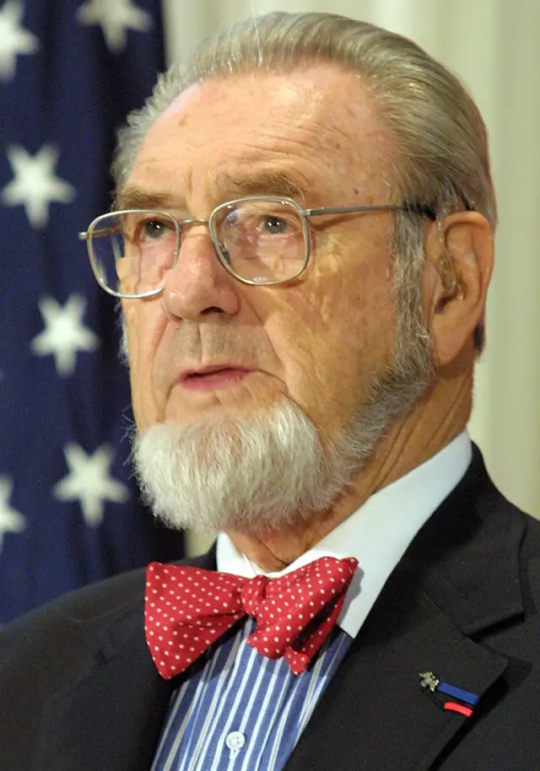
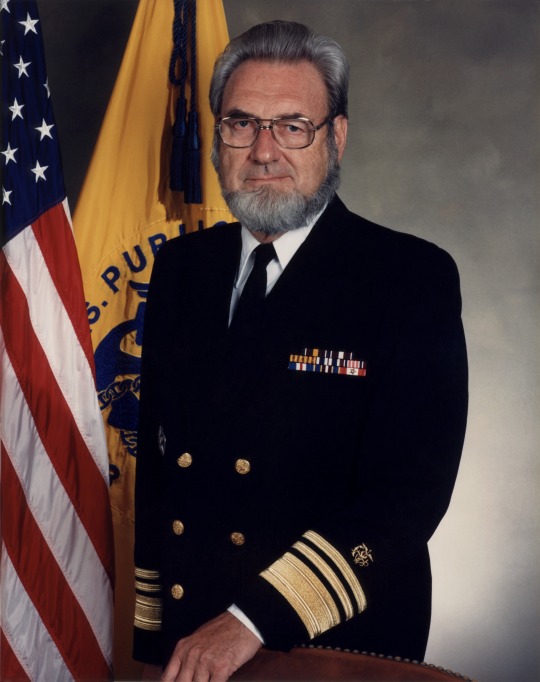
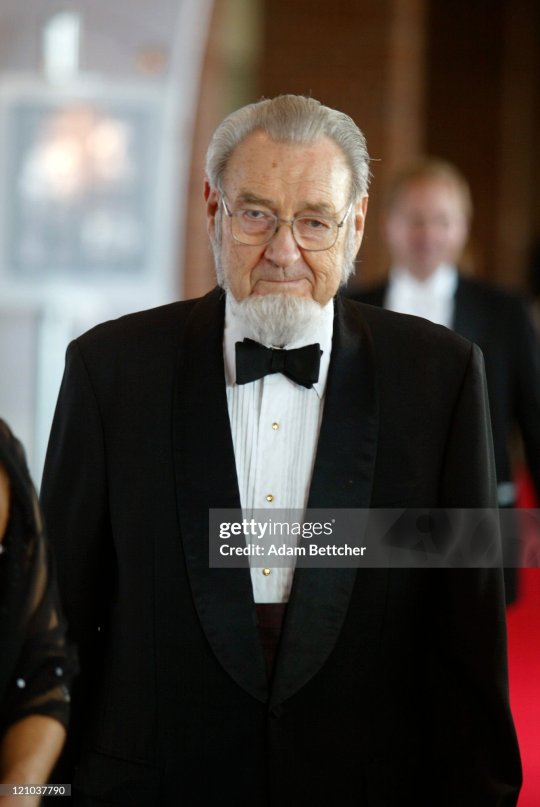
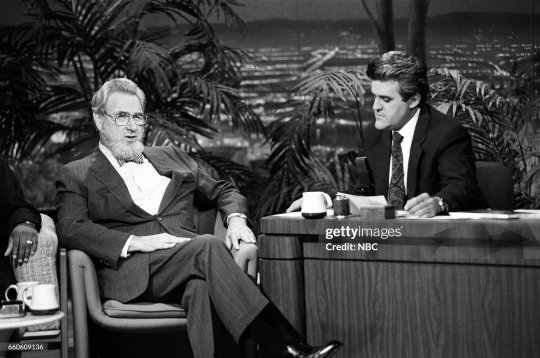
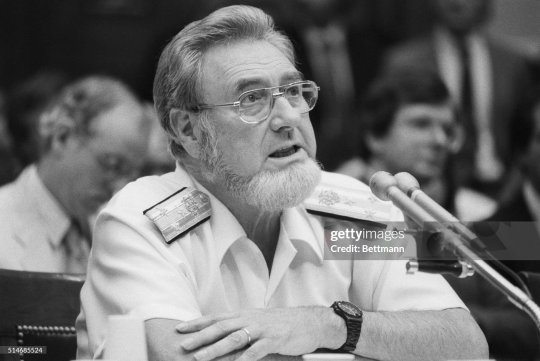
With his mustacheless beard, deep voice and grim expression, he looked like a Civil War admiral when in his epauleted and ribboned blue or white uniform denoting his leadership of the commissioned corps of the U.S. Public Health Service. I had a thing for the guy back in the day as a kid watching his show called C. Everett Koop, M.D. for some reason. Looking back now, I realize why I love watching him as much as I did.

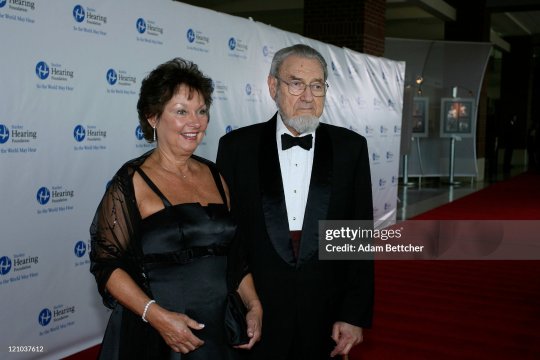
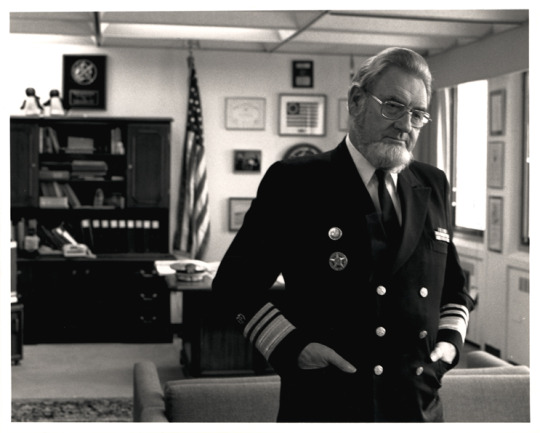


Koop was married nearly 70 years to his first wife until her death, having 4 children together. Koop is survived by his second wife, three children and eight grandchildren. Koop, called “Chick” (as in “Chicken Koop”) by his friends was by far the best known and most influential person to carry that title.

42 notes
·
View notes
Text
Robert Reich:
Friends,
It can be overwhelming. Trump is trying to “flood the zone” so we focus on a few outrages that we find most offensive and lose sight of the big picture — the larger strategy he and Elon Musk and their cronies are pursuing.
Their major goal is not only or even mainly to impose white Christian nationalism on America, nor to downsize the federal government, nor to wreak vengeance on Trump’s enemies.
It is to concentrate ever more power in Trump’s hands, so he can concentrate ever more wealth in the oligarchy’s hands.
The overall strategy boils down to five tactics.
1. Replace federal civil servants with Trump loyalists.
It’s like the communist witch hunts of the late 1940s and early 1950s, only not with loyalty oaths to the United States but loyalty oaths to Trump.
Under one of Trump’s first executive orders, known as “Schedule F,” job protections shielding tens of thousands of senior career federal workers will be eliminated, making it easier to replace them with loyalists.
This week, Trump (via Musk) issued to all 2.3 million federal workers an offer to quit and get eight months pay or face the possibility of being furloughed without pay or fired. This, too, is aimed at getting rid of the professional civil service and installing people more loyal to Trump than to the United States.
Dozens of career officials at the National Security Council have been sent home while their loyalty is being reviewed. Dozens of other career officials, at the U.S. Agency for International Development, have been put on leave for suspicion of resisting an order by Trump.
Trump has conducted a mass purge of more than a dozen inspectors general (in direct violation of a law requiring written notice to Congress with a “substantive rationale, including detailed and case-specific reasons” at least 30 days in advance). The only inspector general who remains is a Trump loyalist.
2. Take over independent decision-making across government.
This past Monday night, Trump froze up to $3 trillion in federal grants and loans to determine whether they “meet his priorities,” even though they had been passed by Congress. This was a direct violation of the Impoundment Act of 1974. (Later in the week, the freeze was rescinded, but it is expected to be reimposed in a form less vulnerable to legal challenges.)
He fired Democratic members of independent agencies — the National Labor Relations Board and the Equal Employment Opportunity Commission — leaving each without enough members to legally act.
This action is also unlawful. The law creating the labor board makes it independent of the White House in part by limiting a president’s ability to fire its members at will, stating: “Any member of the board may be removed by the president, upon notice and hearing, for neglect of duty or malfeasance in office, but for no other cause.”
3. Put current officials on notice that defiance will be punished.
The media calls this Trump’s retribution for past perceived wrongs, but as a practical matter, it’s Trump’s warning to current officials that he will punish any disloyalty or defiance.
Trump has fired more than a dozen prosecutors from the Justice Department who worked for the special counsel Jack Smith on investigations into Trump.
A memo to the fired prosecutors from the acting attorney general, James McHenry, says a major factor in firing them was disloyalty to Trump: “Given your significant role in prosecuting the president, I do not believe that the leadership of the department can trust you to assist in implementing the president’s agenda faithfully,” he wrote.
Trump’s Justice Department has also opened an investigation into the actions of career prosecutors who criminally charged the Trump supporters who attacked the U.S. Capitol on January 6, 2021.
Trump has withdrawn security details from former public officials who have criticized him, although the threats on their lives continue — Anthony Fauci, John Bolton, and General Mark Milley. Trump has also rescinded additional protections for certain senior civil servants whose lives have been threatened.
4. Eliminate or intimidate sources of news and facts that have criticized Trump.
Trump has threatened to throw journalists in jail and revoke the broadcast licenses of television networks he perceives as unduly critical of him. He is also threatening universities, scientists, and government research agencies whose findings he dislikes. Trump’s Department of Education plans to control classroom curricula.
The threats are escalating. Days ago, Musk lashed out at the nonprofit Wikipedia after his page there was updated with a description of his controversial Nazi-like salute during Trump’s Inauguration Day celebrations.
5. Divide and conquer.
Trump wants Americans to get so riled up against one another that we don’t look upward and see where all the wealth and power have gone. This, too, is a tactic for consolidating power.
Yesterday, for example, Trump blamed the tragic air crash on Biden and Obama initiatives to make the federal workforce more diverse, claiming they “came out with a directive — ‘too white,’” but that “we want the people that are competent.”
***
It’s important to see Trump’s strategy as a whole. It is designed to consolidate his power. If we see it as a whole, the rest of us are better able to counter it — by demanding action from and fortifying our members of Congress, organizing for the midterm elections in 2026 to take back both chambers, conducting boycotts, and supporting and defending those who are vulnerable to Trump.
Americans don’t want a dictator. We don’t want an oligarchy. We were founded in rebellion against a king and his aristocracy.
Trump’s consolidation of power comes at a time when huge wealth has been amassed in the hands of 640 billionaires, including many who are in Trump’s White House — including the richest person in the world, who is now giving out orders as if he were Trump.
This concentration of power increases opportunities for oligarchic transactions — more power for more wealth, and more wealth for more power — that siphon off wealth and power from everyone else and undermine democracy.
This is the central reality of what has happened during the first 10 days of the Trump regime.
What do you think?
7 notes
·
View notes
Text
ROBERT REICH
JAN 31
Friends,
It can be overwhelming. Trump is trying to “flood the zone” so we focus on a few outrages that we find most offensive and lose sight of the big picture — the larger strategy he and Musk and their cronies are pursuing.
Their major goal is not only or even mainly to impose white Christian nationalism on America, nor to downsize the federal government, nor to wreak vengeance on Trump’s enemies.
It is to concentrate ever more power in Trump’s hands, so he can concentrate ever more wealth in the oligarchy’s hands.
The overall strategy boils down to five tactics.
1. Replace federal civil servants with Trump loyalists.
It’s like the communist witch hunts of late 1940s and early 1950s, only not with loyalty oaths to the United States but loyalty oaths to Trump.
Under one of Trump’s first executive orders, known as “Schedule F,” job protections shielding tens of thousands of senior career federal workers will be eliminated, making it easier to replace them with loyalists.
This week, Trump (via Musk) issued to all 2.3 million federal workers an offer to quit and get 8 months pay or face possibility of being furloughed without pay or fired. This, too, is aimed at getting rid of the professional civil service and installing people more loyal to Trump than to the United States.
Dozens of career officials at the National Security Council have been sent home while their loyalty is being reviewed. Dozens of other career officials, at the U.S. Agency for International Development, have been put on leave for suspicion of resisting an order by Trump.
Trump has conducted a mass purge of more than a dozen Inspectors General (in direct violation of a law requiring written notice to Congress with a “substantive rationale, including detailed and case-specific reasons” at least 30 days in advance). The only Inspector General who remains is a Trump loyalist.
2. Take over independent decision making across government.
Last Monday night, Trump froze up to $3 trillion in federal grants and loans to determine whether they “meet his priorities,” even though they had been passed by Congress — in direct violation of the Impoundment Act of 1974. (Later in the week, the freeze was rescinded but it is expected to be reimposed in a form less vulnerable to legal challenges.)
He fired Democratic members of independent agencies — the National Labor Relations Board and the Equal Employment Opportunity Commission — leaving each without enough members to legally act.
This action is also unlawful. The law creating the labor board makes it independent of the White House in part by limiting a president’s ability to fire its members at will, stating: “Any member of the board may be removed by the president, upon notice and hearing, for neglect of duty or malfeasance in office, but for no other cause.”
3. Put current officials on notice that defiance will be punished.
The media calls this Trump’s retribution for past perceived wrongs, but as a practical matter it’s Trump warning to current officials that he will punish any disloyalty or defiance.
Trump has fired more than a dozen prosecutors from the Justice Department who worked for the special counsel Jack Smith on investigations into Trump.
A memo to the fired prosecutors from the acting attorney general, James McHenry, says a major factor in firing them was disloyalty to Trump: “Given your significant role in prosecuting the president, I do not believe that the leadership of the department can trust you to assist in implementing the president’s agenda faithfully,” he wrote.
Trump’s Justice Department has also opened an investigation into the actions of career prosecutors who criminally charged the Trump supporters who attacked the U.S. Capitol on January 6, 2021.
Trump has withdrawn security details from former public officials who have criticized him, although the threats on their lives continue — Anthony Fauci, John Bolton, and General Mark Milley. Trump has also rescinded additional protections for certain senior civil servants whose lives have been threatened.
4. Eliminate or intimidate sources of news and facts that have criticized Trump.
Trump has threatened to throw journalists in jail and revoke broadcast licenses of television networks he perceives as unduly critical of him. He is also threatening universities, scientists, and government research agencies whose findings he dislikes. Trump’s education department plans to control classroom curricula.
The threats are escalating. Days ago, Elon Musk lashed out at the nonprofit Wikipedia, after his page was updated with a description of his controversial Nazi-like salute during Trump’s Inauguration Day celebrations.
5. Divide and conquer.
Trump wants Americans to get so riled up against one another that we don’t look upward and see where all the wealth and power have gone. This, too, is a tactic for consolidating ;power.
Yesterday, for example, Trump blamed the tragic air crash on Biden and Obama initiatives to make the federal workforce more diverse, claiming they “came out with a directive — ‘too white’”, but that “we want the people that are competent.”
***
It’s important to see Trump’s strategy as a whole. It is designed to consolidate his power. If we see it as a whole, the rest of us are better able to counter it — by demanding and fortifying our members of Congress, organizing for the midterm elections in 2026 to take back both chambers, conducting boycotts, and supporting and defending those who are vulnerable to Trump.
Americans don’t want a dictator. We don’t want an oligarchy. We were founded in rebellion against a king and his aristocracy.
Trump’s consolidation of power comes at a time when huge wealth has been consolidated in hands of 640 billionaires, including many who are in Trump’s White House — including the richest person in the world, who is now giving out orders as if he were Trump.
This concentration of power increases opportunities for oligarchic transactions — more power for more wealth, and more wealth for more power — that siphon off wealth and power from everyone else and undermine democracy.
This is the central reality of what has happened during the first ten days of the Trump regime.
5 notes
·
View notes
Text
Ga. islanders vow to keep fighting change favoring rich buyers

DARIEN, Ga. - Descendants of enslaved people living on a Georgia island vowed to keep fighting after county commissioners voted to double the maximum size of homes allowed in their tiny enclave.
Residents fear the move will accelerate the decline of one of the South’s few surviving Gullah-Geechee communities.
An aspect of the ordinance that residents take issue with is the fact that it erases a clause about protecting the island’s indigenous history.
During public meetings leading up to the vote, the zoning board proposed changes to the ordinance of lowering the newly allowed home size and removing talk of golf courses being added to the island.
Black residents of the Hogg Hummock community on Sapelo Island and their supporters packed a meeting of McIntosh County’s elected commissioners to oppose zoning changes that residents say favor wealthy buyers and will lead to tax increases that could pressure them to sell their land.
ISLAND’S HERITAGE
Gullah-Geechee communities like Hogg Hummock are scattered along the Southeast coast from North Carolina to Florida, where they have endured since their enslaved ancestors were freed by the Civil War. Scholars say these people long separated from the mainland retained much of their African heritage, from their unique dialect to skills and crafts such as cast-net fishing and weaving baskets.
Regardless, commissioners voted 3-2 to weaken zoning restrictions the county adopted nearly three decades ago with the stated intent to help Hogg Hummock’s 30 to 50 residents hold on to their land.
Yolanda Grovner, 54, of Atlanta said she has long planned to retire on land her father, an island native, owns in Hogg Hummock. She left the county courthouse Tuesday night wondering if that will ever happen.
“It’s going to be very, very difficult,” Grovner said. She added: “I think this is their way of pushing residents off the island.”
Hogg Hummock is one of just a few surviving communities in the South of people known as Gullah, or Geechee, in Georgia, whose ancestors worked island slave plantations.
MORE | Mom in Grovetown calls cops on U.S. energy secretary’s staff
Fights with the local government are nothing new to residents and landowners. Dozens successfully appealed staggering property tax hikes in 2012, and residents spent years fighting the county in federal court for basic services such as firefighting equipment and trash collection before county officials settled last year.
“We’re still fighting all the time,” said Maurice Bailey, a Hogg Hummock native whose mother, Cornelia Bailey, was a celebrated storyteller and one of Sapelo Island’s most prominent voices before her death in 2017. “They’re not going to stop. The people moving in don’t respect us as people. They love our food, they love our culture. But they don’t love us.”
Merden Hall, who asked not to be on camera, has lived on Sapelo his whole life. He says he’s worried about the sizes of homes now allowed on the island.
“I’m not comfortable with this. They approved the 3,000 square feet, that’s the only thing I disapprove of, because that’s going to raise property taxes,” he said.
Hogg Hummock’s population has been shrinking in recent decades, and some families have sold their land to outsiders who built vacation homes. New construction has caused tension over how large those homes can be.
Commissioners on Tuesday raised the maximum size of a home in Hogg Hummock to 3,000 square feet of total enclosed space. The previous limit was 1,400 square feet of heated and air-conditioned space.
Commissioner Davis Poole, who supported loosening the size restriction, said it would allow “a modest home enabling a whole family to stay under one roof.”
“The commissioners are not out to destroy the Gullah-Geechee culture or erase the history of Sapelo,” Poole said. “We’re not out to make more money for the county.”
Commission Chairman David Stevens, who said he’s been visiting Sapelo Island since the 1980s, blamed Hogg Hummock’s changing landscape on native owners who sold their land.
“I don’t need anybody to lecture me on the culture of Sapelo Island,” Stevens said, adding: “If you don’t want these outsiders, if you don’t want these new homes being built ... don’t sell your land.”
County officials have argued that size restrictions based on heated and cooled spaced proved impossible to enforce. County attorney Adam Poppell said more than a dozen homes in Hogg Hummock appeared to violate the limits, and in some cases homeowners refused to open their doors to inspectors.
Hogg Hummock landowner Richard Banks equated that to the county letting lawbreakers make the rules.
“If everybody wants to exceed the speed limit, should we increase the speed limits for all the speeders?” Banks said.
Hogg Hummock residents said they were blindsided when the county unveiled its proposed zoning changes on Aug. 16. Commissioners in July had approved sweeping zoning changes throughout McIntosh County, but had left Hogg Hummock alone.
Commissioner Roger Lotson, the only Black member of the county commission, voted against the changes and warned his colleagues that he fears they will end up back in court for rushing them.
Two attorneys from the Southern Poverty Law Center sat in the front row. Attorney Anjana Joshi said they had “due process and equal protection concerns” about the way the zoning ordinance was amended.
“In our view, this was not done correctly,” said Joshi, who added: “We’re just getting started.”
Located about 60 miles south of Savannah, Sapelo Island remains separated from the mainland and reachable only by boat. Since 1976, the state of Georgia has owned most of its 30 square miles of largely unspoiled wilderness. Hogg Hummock, also known as Hog Hammock, sits on less than a square mile.
Hogg Hummock earned a place in 1996 on the National Register of Historic Places, the official list of the United States’ treasured historic sites. But for protections to preserve the community, residents depend on the local government in McIntosh County, where 65% of the 11,100 residents are white.
#Ga. islanders vow to keep fighting change favoring rich buyers#Gullah Geechee#Gullah Land#sapelo#sapelo island#Freedmen Lands#Stolen Lands#nrohp#national register of historic places
66 notes
·
View notes
Photo






Larry Taylor was born in 1942 in Chattanooga, Tennessee. He grew up in a family and community that emphasized the importance of military service. His great-great-grandfather fought in the Civil War, his great-uncle in World War I and his father and uncles in World War II.
Larry Taylor joined the U.S. Army Reserve Officer Training Program at the University of Tennessee, Knoxville. Upon graduation in June 1966, he was commissioned as a second lieutenant in the Army Reserve, then joined the regular Army in August, volunteering as an armor officer.
He joined the U.S. Army Reserve Officer Training Program at the University of Tennessee, Knoxville. Upon graduation in June 1966, he was commissioned as a second lieutenant in the Army Reserve, then joined the regular Army in August, volunteering as an armor officer. After graduating from the U.S. Army Armor School at Fort Knox, Kentucky, Taylor quickly realized he was better suited to be a pilot than an armor officer. He had already obtained a fixed-wing pilot's license before joining the Army and thought that experience would make it easier to learn rotary-wing flying.
After receiving permission to train as a helicopter pilot, he attended the U.S. Army Primary Helicopter School at Fort Wolters, Texas, and then advanced helicopter training at Fort Rucker (renamed Fort Novosel in 2023), Alabama, where he qualified as an Army aviator in June 1967.
Taylor served in Vietnam from August 1967 to August 1968, flying some of the first Bell AH1-G Cobra attack helicopters in combat. Serving with D Troop (Air), 1st Squadron, 4th Cavalry, 1st Infantry Division, Taylor flew over 2,000 combat missions in UH-1 and Cobra helicopters. He was engaged by enemy fire 340 times and was forced down five times. The U.S. Army awarded him at least 50 combat decorations, including the Silver Star, 43 Air Medals, a Bronze Star and two Distinguished Flying Crosses. He also received the Republic of Vietnam Gallantry Cross with Bronze Star.
Among his many harrowing operations, the most dangerous and frightening took place on June 18, 1968, when he rescued a four-man long range patrol team at significant risk to his own life. For his heroic actions that night, the Army awarded him the Silver Star, which President Joe Biden upgraded to the Medal of Honor in 2023. Taylor concluded his military service as a captain with the 2nd Armored Cavalry in West Germany.
After his Army service, he operated a successful roofing and sheet metal company in Chattanooga and was involved with several veterans' organizations. He has also been a generous donor to charitable nonprofit organizations in the Chattanooga area. Taylor and his wife, Toni, reside in Signal Mountain, Tennessee.
(via Captain Larry L. Taylor | Medal of Honor Recipient | U.S. Army)
57 notes
·
View notes
Text
Who’s Afraid of Project 2025?
Democrats run against a think-tank paper that Trump disavows. Why?
Wall Street Journal
July 29, 2024
By The Editorial Board
Americans are learning more about Kamala Harris, as Democrats rush to anoint the Vice President’s candidacy after throwing President Biden overboard. Ms. Harris wasted no time saying she’s going to run hard against a policy paper that Donald Trump has disavowed—the supposedly nefarious agenda known as Project 2025. But who’s afraid of a think-tank white paper?
“I will do everything in my power to unite the Democratic Party—and unite our nation—to defeat Donald Trump and his extreme Project 2025 agenda,” Ms. Harris tweeted shortly after President Biden dropped out. She’s picking up this ball from Mr. Biden, and her campaign website claims that Project 2025 would “strip away our freedoms” and “abolish checks and balances.”
***
Sounds terrible, but is it? The 922-page document doesn’t lack for modesty, as a wish list of policy reforms that would touch every part of government from the Justice Department to the Corporation for Public Broadcasting. The project is led by the Heritage Foundation and melds the work of some 400 scholars and analysts from an eclectic mix of center-right groups. The project is also assembling a Rolodex of those who might work in a Trump Administration.
Most of the Democratic panic-mongering has focused on the project’s aim to rein in the administrative state. That includes civil service reform that would make it easier to remove some government workers, and potentially revisiting the independent status of agencies like the Federal Trade Commission.
The latter isn’t going to happen, but getting firmer presidential control over the bureaucracy would improve accountability. The federal government has become so vast that Presidents have difficulty even knowing what is going on in the executive branch. Americans don’t want to be ruled by a permanent governing class that doesn’t answer to voters.
Some items on this menu are also standard conservative fare. The document calls for an 18% corporate tax rate (now 21%), describing that levy as “the most damaging tax” in the U.S. system that falls heavily on workers. A mountain of economic literature backs that up. The blueprint suggests tying more welfare programs with work; de-regulating health insurance markets; expanding Medicare Advantage plans that seniors like; ending sugar subsidies; revving up U.S. energy production. That all sounds good to us.
Democrats are suggesting the project would gut Social Security, though in fact it bows to Mr. Trump’s preference not to touch the retirement program, which is headed for bankruptcy without reform. No project can profess to care about the rising national debt, as Heritage does, without fixing a program that was 22% of the federal budget in 2023.
At times the paper takes no position. For example: The blueprint features competing essays on trade policy. This is a tacit admission that for all the GOP’s ideological confusion on economics, many conservatives still understand that Mr. Trump’s 10% tariff is a terrible idea.
As for the politics, Mr. Trump recently said online that he knew “nothing about Project 2025. I have no idea who is behind it.” That may be true. The chance that Mr. Trump has read any of it is remote to nil, and he doesn’t want to be tied to anyone’s ideas since he prizes maximum ideological flexibility.
The document mentions abortion nearly 200 times, but Mr. Trump wants to neutralize that issue. The project’s chief sponsor, Heritage president Kevin Roberts, also gave opponents a sword when he boasted of “a second American revolution” that would be peaceful “if the left allows it to be.” This won’t help Mr. Trump with the swing voters he needs to win re-election.
By our lights the project’s cultural overtones are also too dark and the agenda gives too little spotlight to the economic freedom and strong national defense that defined the think tank’s influence on Ronald Reagan in 1980.
***
But the left’s campaign against Project 2025 is reaching absurd decibels. You’d think Mr. Trump is a political mastermind hiding the secret plans he’ll implement with an army of shock troops marching in lockstep. If his first term is any guide, and it is the best we have, Mr. Trump will govern as a make-it-up-as-he-goes tactician rather than a strategist with a coherent policy guide. He’ll dodge and weave based on the news cycle and often based on whoever talks to him last.
Not much of the Project 2025 agenda is likely to happen, even if Republicans take the House and Senate. Democrats will block legislation with a filibuster. The bureaucracy will leak with abandon and oppose even the most minor reforms to the civil service. The press will revert to full resistance mode, and Mr. Trump’s staff will trip over their own ambitions.
Democrats know this, which is why they fear Trump II less than they claim. They’re targeting Project 2025 to distract from their own failed and unpopular policies.
#Wall Street Journal#Project 2025#trump#trump 2024#president trump#repost#ivanka#donald trump#americans first#america first#america#democrats
103 notes
·
View notes
Text
For almost 15 years, the sight of Hungarian Prime Minister Viktor Orban strutting into leaders’ summits in Brussels has been a constant of European Union politics. Leveraging his authoritarian grip on power in Hungary, Orban has pressured the EU into providing subsidies to patronage networks controlled by his Fidesz Party, while leading a populist onslaught against liberalism and the left. But even as Orban attracts fawning admiration from other anti-liberal populists in Europe and the United States, cracks are beginning to show in his own power base in Hungary.
The recent surge of infighting within Fidesz’s political machine has taken many observers in and outside Hungary by surprise. After the party’s initial massive election victory in 2010, the collapse of rival parties that had mismanaged the economy and become engulfed in scandal when in government provided Orban’s inner circle with the opportunity to seize control of state media, the central bank and appointments to all levels of the judiciary. Having secured complete control of the state, Orban and his Fidesz cronies used repressive tactics by the security services as well as aggressive disinformation to divide the opposition and intimidate business leaders and civil society networks.
The regime’s near-complete dominance of Hungarian-language media has enabled Orban as well as the party’s regional bosses to use a blend of anti-migrant xenophobia and hostility to LGBTQ rights to sustain a strong base of support in small towns and rural communities. Orban has been more careful in recent years when it comes to fueling irredentist hostility against Romania, Ukraine and Slovakia over territory lost to neighboring states after Hungary’s defeat in World War I. But the Fidesz machine still tries to present Orban as a protector of Hungarian minorities abroad to its right-wing domestic audience.
In part because of the divide and rule tactics used by Fidesz since the early 2010s, but also because they lack deep historical traditions and resilient structures, the Hungarian opposition has been paralyzed by squabbling among parties and movements as hostile to one another as they are to Fidesz. More recent efforts to construct a united front in the face of Orban’s authoritarianism have struggled to sustain the cohesion needed to keep supporters mobilized in the face of mounting state pressure.
Yet state capture, disinformation and virulent nationalism alone would not have been enough to enable the Fidesz machine to secure Orban’s lasting dominance. With Hungary’s accession to the EU in 2004, whoever was in power in the late 2000s was going to be able to take credit for the impact that huge flows of funding from Brussels had on infrastructure development and economic growth in the aftermath of the great financial crisis. For all the fierce populist rhetoric Orban directs against Brussels to court Trumpian nationalists in the U.S. and the far right in Europe, the extent to which Fidesz relies on the distribution of EU funds to sustain its dominance within Hungary has kept Orban from being too disruptive when it comes to European integration.
Though the European Commission’s concerns over the erosion of rule of law in Hungary remain a severe point of friction, Orban’s willingness to avoid escalation over other contentious issues—such as aid for Ukraine or environmental regulation—has made it difficult for the Hungarian opposition to take advantage of the tensions he has stoked with Brussels. The fact that Orban’s patronage network now reaches deep into the Hungarian banking sector and national oil company has also provided Fidesz with options beyond EU subsidies with which to shape economic conditions ahead of elections. In the face of Fidesz’s overwhelming strength and willingness to use security services to intimidate opponents, the inability of opposition parties to make any significant gains during the 2022 parliamentary elections seemed to bury any hopes of change in Hungary for the foreseeable future.
Yet even as Orban successfully cultivated enthusiasm for his project among the populist right in the U.S. and EU, tensions were building up within his own power structure that could prove a much greater threat to the survival of the Fidesz political machine than a cowed Hungarian opposition. After such a long record of dominance, many senior figures loyal to Orban had become complacent over the impact a wave of political scandals might have on the Hungarian public at a time when inflation and other economic pressures were generating frustration even among Fidesz’s core supporters.
With the shock resignation in early February of President Katalin Novak and former Justice Minister Judit Varga over efforts within the government to cover up a child abuse scandal, tensions within Orban’s power structure have now burst into the open. In response, Peter Magyar—a senior figure within the Orban regime as well as Varga’s ex-husband—resigned from his positions at state-owned enterprises and founded a new political movement with the aim of dismantling a corrupt status quo. By early April, Magyar’s new opposition Tizsa Party was leading mass protests in Budapest and rapidly preparing a nationwide network designed to peel off elected officials and voters among Orban’s political base in smalltown Hungary.
The sudden defection of a figure like Magyar, who had long worked at the heart of the Fidesz political machine, is not just the result of a sudden discovery of moral scruples. As with many similar semi- or fully authoritarian regimes, the longer Orban has remained in office, the more entrenched various figures within his inner circle have become at the highest levels of power. For ambitious mid-40s careerists like Magyar, the grim prospect of waiting another decade for Orban’s inner circle—all 60-70 years old—to finally leave the scene was already fueling impatient frustration even before the current wave of scandals engulfed Fidesz.
Orban’s channeling of tens of millions of euros into populist think tanks and conferences designed to impress self-declared national conservatives in the U.S. and U.K. also generated the image of a leader so engaged in the Anglosphere’s culture wars that he had become detached from the everyday concerns of Hungarian politics. For an insider like Magyar, fed up with both waiting for a turn at the top and Orban’s obsession with his world historical role, the time seemed ripe to break away and establish a new political machine.
Deploying messaging and mobilization techniques eerily similar to those used by Orban’s team before it took power in 2010, Magyar has tried to knit together an electoral coalition made up of liberal-leaning voters who had always opposed the current government and a large swathe of Fidesz voters tired of the rampant cronyism at the heart of Orban’s patronage networks. But while Fidesz defectors like Magyar may eventually help to restore the rule of law and work more constructively in EU institutions, they are also likely to continue embracing the populist themes that propelled Orban to power. Moreover, in working to entice Fidesz regional bosses to switch allegiance to his new movement, Magyar will likely replicate the clientelist structures Orban has used to secure the loyalty of smalltown elites through the distribution of state and EU funds.
Magyar is also now the target of a full onslaught of attacks from media loyal to Orban, so there is no guarantee he can capitalize on his rise to prominence to make significant electoral gains in upcoming European Parliament and local elections, which his movement needs to survive. To prevent the fracturing of his own power base, Orban may also do his utmost to offer financial incentives and senior positions to bring Magyar and other defectors back into the Fidesz political machine. Though Magyar’s ambitions will remain focused on replacing Orban as prime minister, business networks worried about instability that a clash between the two might bring will also try to broker a negotiated transfer of power that avoids any deeper reforms.
Even if Magyar falters, the speed with which Fidesz’s internal tensions have turned into an external challenge to its political machine is an indication of how brittle Orban’s grip on power has become. Even the most dominant authoritarian leader will always face dilemmas when it comes to rewarding ambitious young talent without alienating older cronies whose loyalty is the glue that holds a clientelist system together. If Orban is eventually toppled, it should surprise no one if the figures who were once closest to him turn out to be the ruthless operators that finally take him down.
14 notes
·
View notes
Text

Matt Davies :: Shirk. http://Newsday.com/matt
* * * *
LETTERS FROM AN AMERICAN
November 24, 2024
Heather Cox Richardson
Nov 25, 2024
Since the night of the November 5, election, Trump and his allies have insisted that he won what Trump called “an unprecedented and powerful mandate.” But as the numbers have continued to come in, it’s clear that such a declaration is both an attempt to encourage donations— fundraising emails refer to Trump’s “LANDSLIDE VICTORY”—and an attempt to create the illusion of power to push his agenda.
The reality is that Trump’s margin over Democratic nominee Vice President Kamala Harris will likely end up around 1.5 points. According to James M. Lindsay, writing for the Council of Foreign Relations, it is the fifth smallest since 1900, which covers 32 presidential races. Exit polls showed that Trump’s favorability rating was just 48% and that more voters chose someone other than Trump. And, as Lindsay points out, Trump fell 4 million votes short of President Joe Biden in 2020.
Political science professor Lynn Vavreck of the University of California, Los Angeles, told Peter Baker of the New York Times: “If the definition of landslide is you win both the popular vote and Electoral College vote, that’s a new definition” On the other hand, she added, “Nobody gains any kind of influence by going out and saying, ‘I barely won, and now I want to do these big things.’”
Trump’s allies are indeed setting out to do big things, and they are big things that are unpopular.
Trump ran away from Project 2025 during the campaign because it was so unpopular. He denied he knew anything about it, calling it “ridiculous and abysmal,” and on September 16 the leader of Trump’s transition team, Howard Lutnick, said there were “Absolutely zero. No connection. Zero” ties between the team and Project 2025. Now, though, Trump has done an about-face and has said he will nominate at least five people associated with Project 2025 to his administration.
Those nominees include Russell Vought, one of the project's key authors, who calls for dramatically increasing the powers of the president; Tom Homan, who as acting director of Immigration and Customs Enforcement (ICE) oversaw the separation of children from their parents; John Ratcliffe, whom the Senate refused in 2019 to confirm as Director of National Intelligence because he had no experience in intelligence; Brendan Carr, whom Trump wants to put at the head of the Federal Communications Commission and who is already trying to silence critics by warning he will punish broadcasters who Trump feels have been unfair to him; and Stephen Miller, the fervently anti-immigrant ideologue.
Project 2025 calls for the creation of an extraordinarily strong president who will gut the civil service and replace its nonpartisan officials with those who are loyal to the president. It calls for filling the military and the Department of Justice with those loyal to the president. And then, the project plans that with his new power, the president will impose Christian nationalism on the United States of America, ending immigration, and curtailing rights for LGBTQ+ individuals as well as women and racial and ethnic minorities.
Project 2025 was unpopular when people learned about it.
And then there is the threat of dramatic cuts to the U.S. government, suggested by the so-called “Department of Government Efficiency,” or DOGE, headed by billionaires Elon Musk and Vivek Ramaswamy. They are calling for cuts of $2 trillion to the items in the national budget that provide a safety net for ordinary Americans at the same time that Trump is promising additional tax cuts for the wealthy and corporations. Musk, meanwhile, is posturing as if he is the actual president, threatening on Saturday, for example: “Those who break the law will be arrested and that includes mayors.”
On Meet the Press today, current representative and senator-elect Adam Schiff (D-CA) reacted to the “dictator talk,” with which Trump is threatening his political opponents, pointing out that "[t]he American people…voted on the basis of the economy—they wanted change to the economy—they weren’t voting for dictatorship. So I think he is going to misread his mandate if that’s what he thinks voters chose him for.”
That Trump and his team are trying desperately to portray a marginal victory as a landslide in order to put an extremist unpopular agenda into place suggests another dynamic at work.
For all Trump’s claims of power, he is a 78-year-old man who is declining mentally and who neither commands a majority of voters nor has shown signs of being able to transfer his voters to a leader in waiting.
Trump’s team deployed Vice President–elect J.D. Vance to the Senate to drum up votes for the confirmation of Florida representative Matt Gaetz to become the United States attorney general. But Vance has only been in the Senate since 2022 and is not noticeably popular. He—and therefore Trump—was unable to find the votes the wildly unqualified Gaetz needed for confirmation, forcing him to withdraw his name from consideration.
The next day, Gaetz began to advertise on Cameo, an app that allows patrons to commission a personalized video for fans, asking a minimum of $550.00 for a recording. Gaetz went from United States representative to Trump’s nominee for U.S. attorney general to making videos for Cameo in a little over a week.
It is a truism in studying politics that it’s far more important to follow power than it is to follow people. Right now, there is a lot of power sloshing around in Washington, D.C.
Trump is trying to convince the country that he has scooped up all that power. But in fact, he has won reelection by less than 50% of the vote, and his vice president is not popular. The policies Trump is embracing are so unpopular that he himself ran away from them when he was campaigning. And now he has proposed filling his administration with a number of highly unqualified figures who, knowing the only reason they have been elevated is that they are loyal to Trump, will go along with his worst instincts. With that baggage, it is not clear he will be able to cement enough power to bring his plans to life.
If power remains loose, it could get scooped up by cabinet officials, as it was during a similarly chaotic period in the 1920s. In that era, voters elected to the presidency former newspaperman and Republican backbencher Warren G. Harding of Ohio, who promised to return the country to “normalcy” after eight years of the presidency of Democrat Woodrow Wilson and the nation’s engagement in World War I. That election really was a landslide, with Harding and his running mate, Calvin Coolidge, winning more than 60% of the popular vote in 1920.
But Harding was badly out of his depth in the presidency and spent his time with cronies playing bridge and drinking upstairs at the White House—despite Prohibition—while corrupt members of his administration grabbed all they could.
With such a void in the executive branch, power could have flowed to Congress. But after twenty years of opposing first Theodore Roosevelt, and then William Howard Taft, and then Woodrow Wilson, Congress had become adept at opposing presidents but had split into factions that made it unable to transition to using power, rather than opposing its use.
And so power in that era flowed to members of Harding’s Cabinet, primarily to Treasury Secretary Andrew Mellon and Secretary of Commerce Herbert Hoover, who put into place a fervently pro-business government that continued after Harding’s untimely death into the presidency of Calvin Coolidge, who made little effort to recover the power Harding had abandoned. After Hoover became president and their system fell to ruin in the Great Depression, Franklin Delano Roosevelt took their lost power and used it to create a new type of government.
In this moment, Trump’s people are working hard to convince Americans that they have gathered up all the power in Washington, D.C., but that power is actually still sloshing around. Trump is trying to force through the Senate a number of unqualified and dangerous nominees for high-level positions, threatening Republican senators that if they don’t bow to him, Elon Musk will fund primary challengers, or suggesting he will push them into recess so he can appoint his nominees without their constitutionally-mandated advice and consent.
But Trump and his people do not, in fact, have a mandate. Trump is old and weak, and power is up for grabs. It is possible that MAGA Republicans will, in the end, force Republican senators into their camp, permitting Trump and his cronies to do whatever they wish.
It is also possible that Republican senators will themselves take back for Congress the power that has lately concentrated in presidents, check the most dangerous and unpopular of Trump’s plans, and begin the process of restoring the balance of the three branches of government.
LETTERS FROM AN AMERICAN
HEATHER COX RICHARDSON
#Matt Davies#Heather Cox Richardson#unqualifed and dangerous#Republican Senators#background check#Warren G. Harding#the American Presidency#American History#history#dictator talk
11 notes
·
View notes